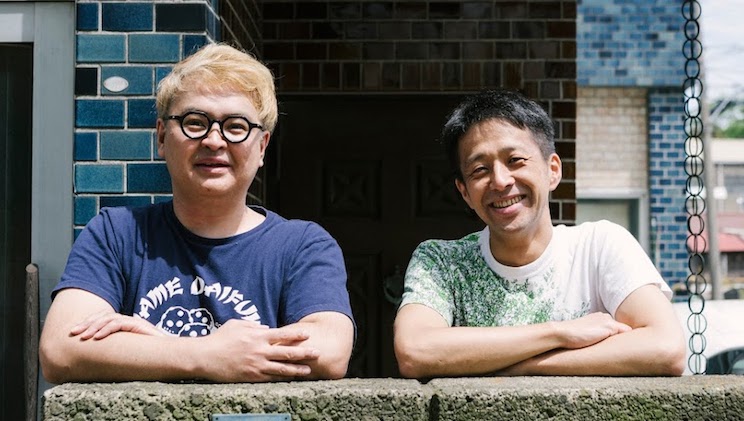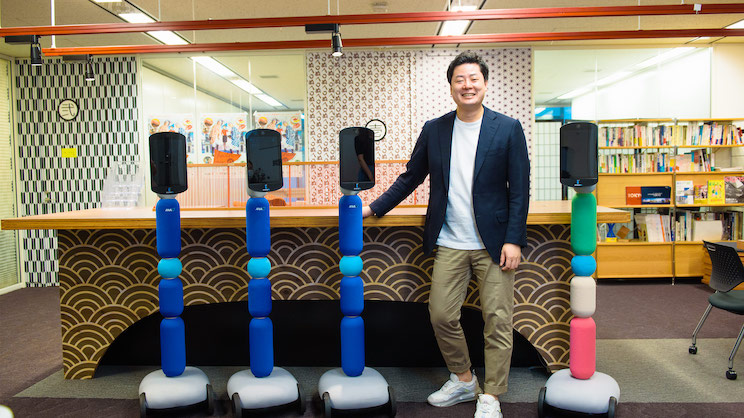Working at Shiftall’s “Weird Electronics Shop”: An In-Depth Analysis [Part Two] - Show-All Exposé on Shiftall’s Cutting Edge-Creating “Weird Workshop”-
Working at Shiftall’s “Weird Electronics Shop”: An In-Depth Analysis [Part Two] - Show-All Exposé on Shiftall’s Cutting Edge-Creating “Weird Workshop”-

Shiftall announced its automatic craft beer filling service “DrinkShift” at “CES2019,” a consumer electronic showcase held this January in the US. After hearing that the company had some tips and tricks in creating an organization that churns out cutting-edge products, we decided to pay a visit to their office in Bakurocho, Nihonbashi for an interview.
In Part One of the interview, we focused on the core philosophy behind Shiftall’s cutting-edge creativity. We spoke with Yuki Kai-san (Executive Officer) and Takuma Iwasa-san (CEO) on the particularities of their DIY office, how to build in-office communication, and more.
(Click here for Part One) https://bridgine.com/2019/02/27/shiftall1/
Appointing garbage duty via cutting-edge technology?!
Handmade devices that are fun yet efficient at the same time.
—When I walked into the office today I saw some pretty weird systems. You don’t usually see these things and they peaked my interest.
Kai : It’s true, all our visitors get their interests peaked (laughs). I’ll show you a couple. First we have this wooden board for clocking in and out. It’s an extremely primitive operating system. You just flip your name tag whenever you clock in and out of work. Looks very analog at first, but actually the wooden tags are linked to a chat service. So every shift updates of our staff gets uploaded to the chat. We made this after one of our staff came up with the idea.
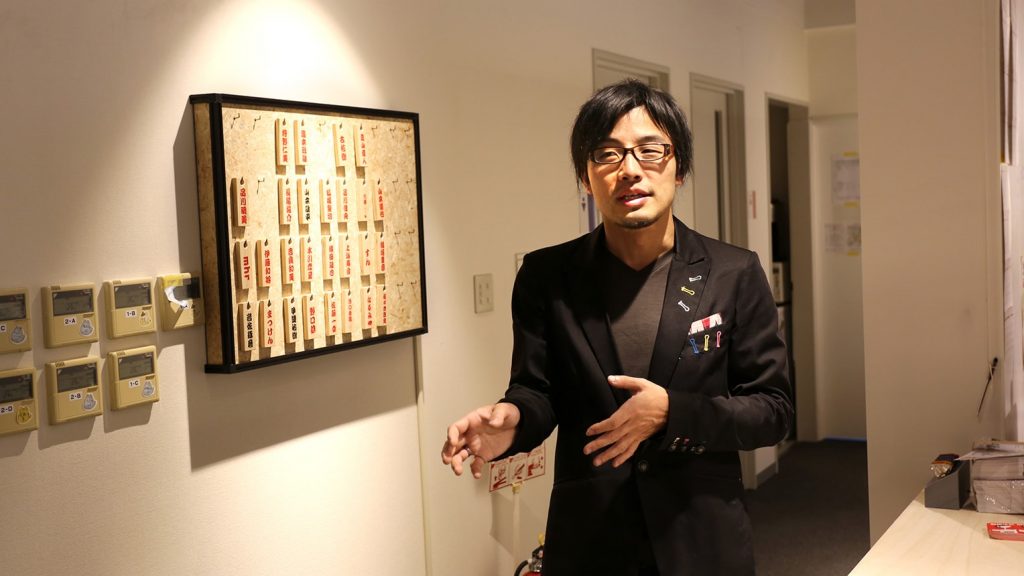
Kai : When we asked our staff for a punch clock system via chat, for some reason a proposal for an old-school wooden tag came up.
Iwasa : I was like, seriously? Wooden tags in this century? (laughs) But in fact it got all of us excited and so the project went ahead. Aside from this punch clock, most of the other systems were created by our staff on their own.
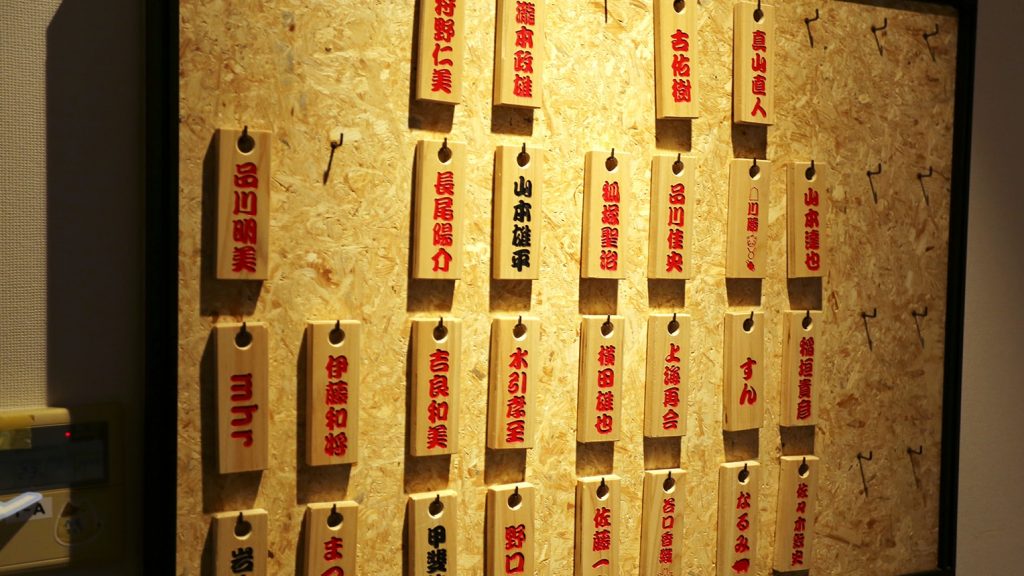
—So it’s like a creative free-for-all. And what about that light-bulb-looking thing over there?
Kai : That’s a device that tells us when a guest has arrived. When a guest asks for our staff using the tablet placed outside our entrance, the speaker tells us their arrival is how it’s set up. I’ll give it a try
Machine Voice : A guest has arrived.
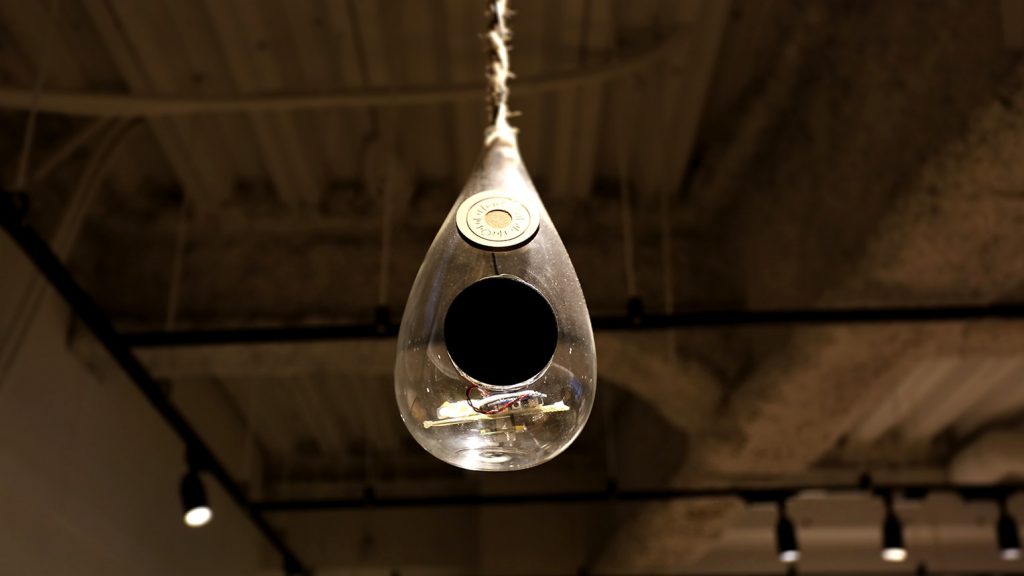
Kai : In addition to notifying by voice audio, you’ll also get a notification on the chat so you’ll know through a smartphone that a customer has arrived, even if you’re having a meeting outside the office. Say you’re late taking lunch, or the guest may arrive 10 minutes early. You’ll have to notify these things to whoever is at the office right? So then we thought, why not just directly send a notification on the smartphone. Much quicker.
Iwasa : And this actually turned out pretty useful. Like for example, you’re meeting a guest at a conference room, but your next guest arrived early. That happens a lot. But since you’ll know about it through a smartphone, it all becomes more of an incentive to “Hurry up and move on to the next meeting!”
—It’s true. That happens more often than not. Anything else?
Kai : Next we’ll show you a trash disposal switch. You know how in office it’s almost expected that whoever that notices a packed trashcan has to take it out to empty? More often than not, it’s always the same person because he/she is intuitive to notice those things and does them. But that’s not fair to them, and that’s how this system was created. If someone notices a packed trashcan, they press this switch. And then...voila.
Machine Voice : It is Kai-san’s turn. Please take out the trash.
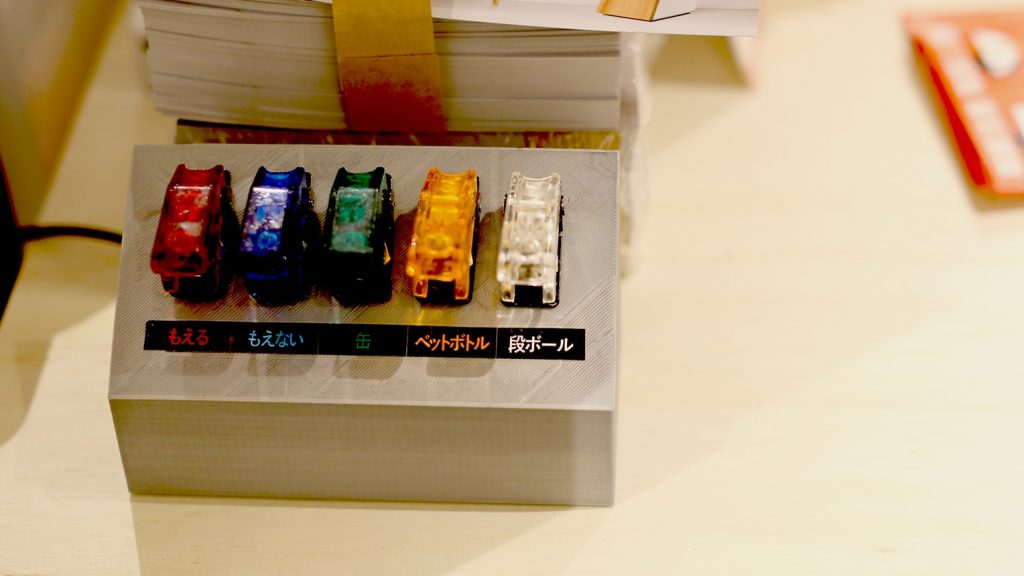
Kai : Oh, its me (laughs). This is linked to the punch clock board we showed you earlier so it randomly picks the person to take out the trash from everyone in the office at the moment. A point I want to make is that when you take out the trash, it even gives you a compliment “Thank you for taking out the trash, well done”. This trash disposal switch was actually not made by an engineer, but a product manager from the administration side.
Looks low-tech, but high-tech underneath.
That’s a required recipe for popularizing IoT.
—Cutting-edge technology hiding and being used in plain sight I see.
Iwasa : The punch clock board earlier is a great example of this. Keep the UX (user experience) of traditional wooden tags the same, but have an additional layer of technology moving underneath. I mean, calling the office to say “hey, is so-and-so there?” is pretty pointless. With the added phone bills and the physical act of having someone picking up the phone is waste of time too. But, it’s also not exactly efficient to type into the chat that someone has clocked in. That’s why we made it so that the information is directly uploaded to the chat.
Kai : I understand that some might feel afraid of technology, but reducing these abundant and meaningless activities is what technology does so well.
—Do you always try and hide the technology?
Iwasa : We do. I think that is the key into popularizing and proliferating IoT. For example, say there is an old lady living in the countryside doing what she’s been doing for decades. She might one day realize that life is somewhat easier, more convenient. But she can’t figure out the reason behind it is the system hidden in the back of the electronics. That’s what I think is the best way to popularize something. Making things easier and more convenient without anybody noticing. Take Hangzhou, China. The IoT there is extremely advanced, courtesy of Alibaba’s smart system infrastructure. So much so that the traffic lights are fully-online with cutting-edge automated controls. There is so much AI working underneath but the people there aren’t focused on technology. They just think “huh, haven’t had a traffic jam in a while.”
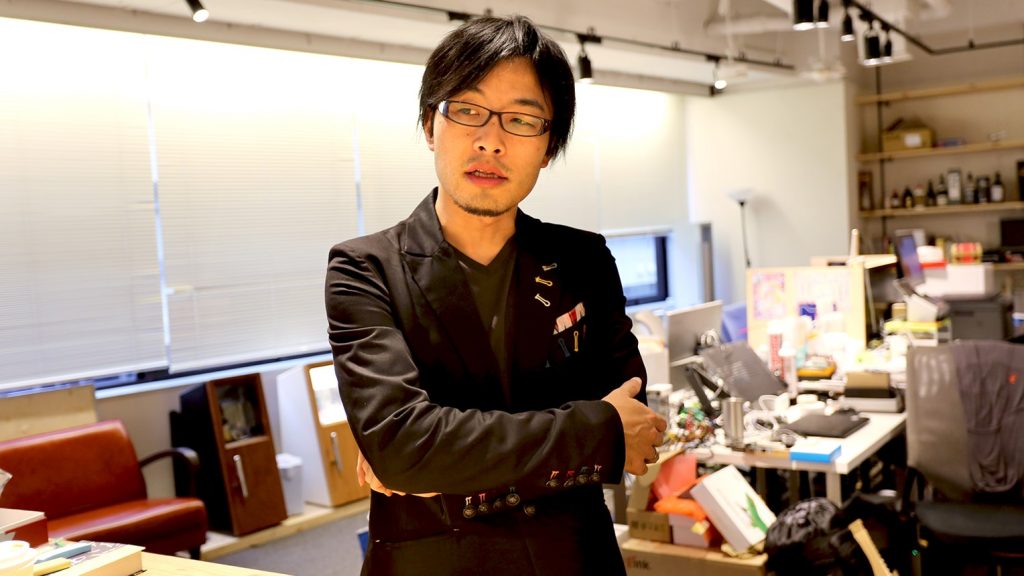
—I take it that it’s best for technology to be out of sight, out of mind.
Iwasa : Yes, I do believe so. “Hi-Tech” may seems so otherworldly. Some may even fear or outright hate it. But having low-tech and familiar appearances will make it easier for technology to be ingrained into everyday life.
Kai : That’s why our staff emphasizes creating something tangible. Used by hand. Creating a sense of “Feel” through technology, that’s the fun part of the hardware business we’re dealing in.
We want to take back the good old days of open dialog and communication,
through technology of course.
—What is the advantage in gathering all the information together into the chat?
Iwasa : The best advantage in the chat is that the communication becomes open. Emails are in general one-on-one interaction. Of course you can add others in the CC but unless you actively add them, no one else will see the line of dialog. In comparison, communication via chat is all open in general. At it’s basic state, communication in the office had been very open in the past. During the days of landlines you can pretty much hear every conversation taking place nearby. If a supervisor was yelling at his supplier because of a delay in delivery, you’d keep in mind and work around that situation. But with the advent of emails, that became no longer the case. Addressing complaints about delays in delivery could be done through email, but no one nearby would know of it. But a chat is more open than emails. A colleague working downstairs at another floor could know about a delayed delivery through the chat.
—Much smoother line of communication than the days of emails.
Iwasa : Sure, I mean, you can literally see who is doing what. It’s also worth noting that you can actively sort out and choose what you want to be a part of. You can join or leave a chat channel based on your preferences. Compared to email communication it just becomes so much more efficient. If you think about it, you need technology in order to take the good things back from the good old days of communication.
You create your own environment,
and DIY builds teamwork.
—Did you build the workshop space to create the hardware?
Iwasa : Yes we did. There are 4 types of specialists in the development team at Shiftall: Electrical, Mechanical Design, Embedded Software, Front-End and Back-End, with an even distribution of members. Out of the 4 types, it was mainly the members from the Electrical and Mechanical Design that are working at this workshop space everyday; cutting and pasting, soldering and examining using microscopes. Usability is our first priority here.
—Why so focused on DIY?
Iwasa : The main reason is that we’ll have more attachment and familiarity to things we created together. I believe that teamwork is built through co-ownership of an environment created together, like DYI furnishing the office interior.
—Building a relationship with the members through DIY.
Kai : Right. I have been in development for a long time and came to feel that it’s extremely vital to establish a strong teamwork through creating our own environment. And that is how this happened.
—This large and long table is DIY too?
Iwasa : Yes it is. We wanted a large table for the staff to have a meeting standing up, so we just gathered some long squared timbers and built it. Having a meeting standing up leads to shorter conferences, and the casual setting accelerates conversation.
Kai : Plus, it’s a bar at night. (laughs) A few of us had a some drinks here last night.
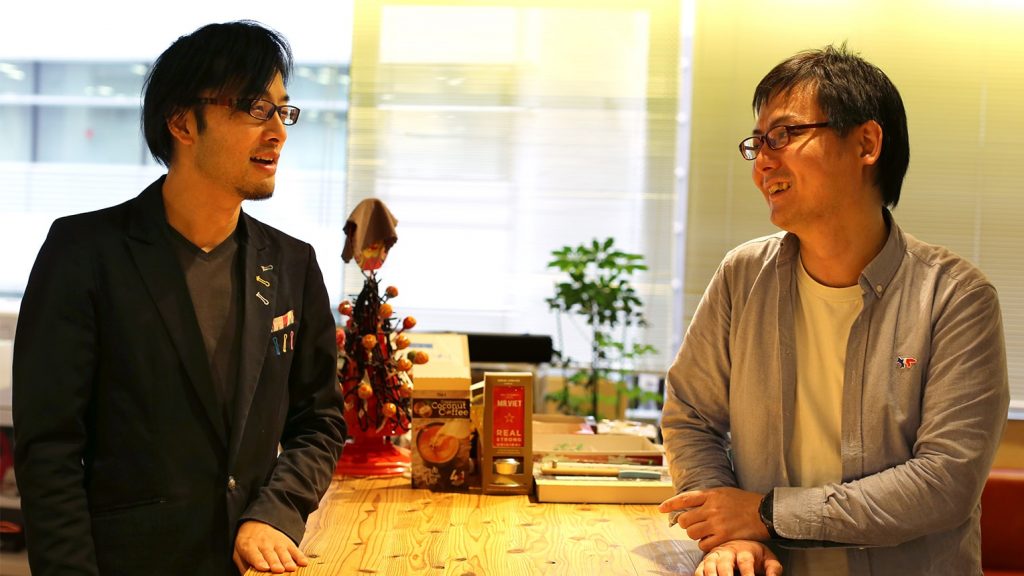
Iwasa : A designer had the idea to place this table near the entrance of the workshop space. And there is a meaning behind this layout. Developers have a habit of working long and hard once they’re alone and in the “zone.” But having a meeting table near the entrance to the workshop space will lead to communication.
A dagashiya (traditional Japanese store that sells children's snacks) in the office?
To improve and liven up communication.
—So what about all these snacks and nibbles on meeting tables and various other parts of the office?
Iwasa : This is something one of our staffs
just started personally. The staff knew that I always ate ramen noodles so he bought a whole bunch to the office for me. I didn’t want to bum off, so I paid ¥130 for a pack is the beginning. Nowadays it’s “hey, bought a box-full of chocolates, have some,” and “if you want one, show a little mercy and transfer whatever you feel like online online.” (laughs)
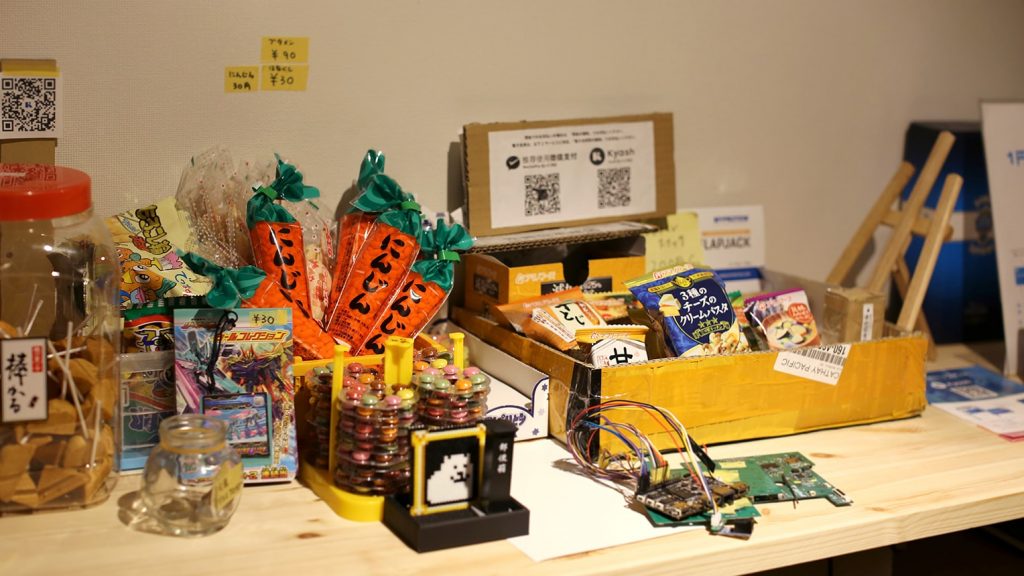
—Funny how there’s an electronic board next to a package of instant miso soup.
Kai : The combination of the dagashiya e-pay with the QR code is also quite brilliant too. Even though we don’t have a Chinese-only speaker in our office, for some reason the explanation that we accept WeChat Pay is written in Chinese. (laughs)
—I have heard of companies incorporating the Office Glico (small kiosk store to purchase Glico snacks) system, but never about a staff personally having a store in an office. It’s very co-dependent and supportive. Almost like a small town.
Iwasa : Maybe that’s exactly what a working environment should be like. During the Edo period, young guys working for private stores often lived with the owner on the 2nd floor of the store while the wife of the store made sure to feed them. It was literally a working environment with “room and board (and a bath).” That’s one type of a community. Or, something similar to that. An environment emphasizing communication is maybe what created this a proactive community.
—An office environment that encourages communication, I can see that happening here.
Iwasa : What we develop here is hardware, and you just can’t do that alone. No matter how small the project is, all 4 types of specialists from Electrical, Mechanical, Design and Embedded Software need to come together to make it happen. Otherwise, if you have everyone confined to booths and meeting rooms, unless the work involves you, it becomes someone else’s business and not yours. I believe that it is highly imperative that we establish an open-air office, regardless of the type of business.
In Part One of the interview, we focused on the core philosophy behind Shiftall’s cutting-edge creativity. Check out the first article as well as this one.
https://www.bridgine.com/2019/02/27/shiftall1/
Interview/Text: Ichiro Yasui (Konel) Photographs: Tatsuya Sato (Konel)
Shiftall Inc.
A hardware manufacturer planning, developing and selling a variety of electronics and gadgets utilizing IoT. Presenting never before seen products such as WEAR SPACE, a wearable device blocking the wearer’s field of vision for focus, and DrinkShift, a refrigerator that automatically delivers beer to your home when running out of stock.
tps://shiftall.net/
